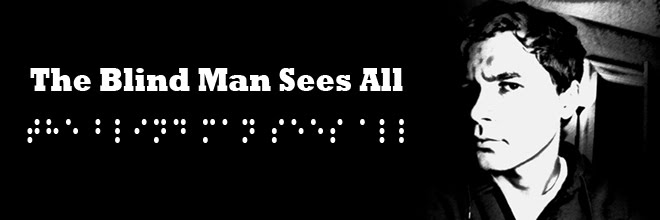Previous posts have detailed my interest in musical formats and the effort put into programming music to the structures of those media. In this, the LP reigned supreme, as both the longest-lived format of aural media and – having a flip side – the one most obviously allowing for divvying up music thematically. Famous examples include the symmetrical halves of Led Zeppelin IV and the asymmetrical halves of What's Going On; the Abbey Road medley and the Purple Rain live suite. An example less frequently discussed is an album I've often referenced, yet somehow never written about in detail.
Kind of Blue was released in 1959 to warm (if less than overwhelming) critical and commercial success. It has sold continuously since then and become universally acclaimed. At least 260 variants of Kind of Blue have been released worldwide, yet bizarrely few have done full justice to the album's potential. All releases until 1992 were mastered with Side A at the incorrect speed and pitch, while most releases since 1997 have tacked the excellent alternate take of "Flamenco Sketches" immediately after the original, creating substantial redundancy in a fairly short album. Thankfully, Kind of Blue is now widely available as a 5-track album with all songs playing at their intended speed. The results are sublime, substantiating Jimmy Cobb's famous assertion that the album "must have been made in heaven."
In earthly terms, Kind of Blue was made at Columbia's 30th Street Studio over two recording dates, on March 2 and April 22, 1959. Side A includes – in order – the album's most famous, most catchy, and most controversial tracks. This at first would not appear to leave much for the flip side to lay claim to. What's more, the tracks were arranged by recording date rather than theme, with Side A recorded on March 2, and Side B (mostly) on April 22; little effort was put into sequencing, as was the industry standard in the late 50s. Yet despite being less famous pieces dropped on the end of what was recorded as just another album, "All Blues" and "Flamenco Sketches" form the centerpiece of the medium's most indispensable document.
"All Blues" is the longest track on Kind of Blue, and was by all accounts one of the most difficult to record, with a pulsating foundation that called for more than 11 minutes of precision from the rhythm section. Solos lead off with Miles Davis, followed by Cannonball Adderley, John Coltrane, and Bill Evans. Each is a master class in effortless playing, with Adderley in particular constraining his boundless energy for his coolest moment on the record. Davis, as usual, delivers an impeccable solo, but steals the show with the coda, returning after an already perfect 11 minutes for a subtle final brushstroke. During and after his lifetime, Miles Davis was set apart from other musicians by a magic that was difficult to pinpont: something that extended beyond his musical sensibilities, his understated technical prowess, or even his legendary cool. This master's touch allowed Davis to consistently assemble the greatest bands in jazz, and elevate even the most familiar standards to new heights. It is nowhere in greater evidence on record than as he guides "All Blues" to a close.
"Flamenco Sketches" sustains its predecessor's atmosphere while dropping its insistent pulse. It epitomizes not only the sound of Kind of Blue, but the mood synonymous with its name. Solos are by Davis, Coltrane, Adderley, Evans, and Davis again. This time, the spotlight belongs to Coltrane, who delivers likely the most pensive solo of his storied career, and among the most beautiful. By the time Evans and Davis have completed their solos, the tune is floating on air, and the album dissolves into the ether off of Jimmy Cobb's drum kit.
Serendipity (or divine intervention) is frequently credited in the Kind of Blue narrative. Admittedly, the circumstances were near ideal: Davis' first great quintet, including his all-time most famous collaborator, playing in jazz's greatest recording studio with Bill Evans as a special guest. Yet it was only with protracted effort that Miles Davis assembled that quintet, and it was specifically for his modal album that he included Evans – a pianist whose impressionist tendencies informed not only the band's ability to tackle the music, but even the liner notes. Fortune's greatest contribution to the finished product may ultimately have been the track order. Within a decade of the album's release, Kind of Blue was on its way to canonization, and consciously arranging LPs had become a major focus in jazz and beyond. Intentionally or otherwise, Kind of Blue's sequencing set an example for every album to follow.
Saturday, May 6, 2017
Subscribe to:
Posts (Atom)


